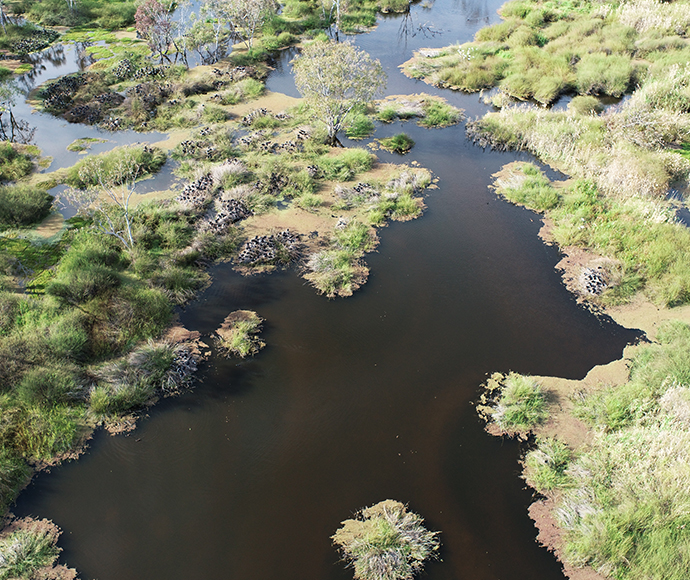On Tuesday 30 August 2022, the Macquarie-Cudgegong Environmental Water Advisory Group (EWAG) met in Dubbo to discuss and review their environmental water use strategy for the 2022–23 water year.
Catchment conditions
A minor to moderate flood warning is in place for the Macquarie River downstream of Burrendong Dam, which has been operating under flood mitigation zone (FMZ) operations since September 2021 and is at 116% capacity at the time of the meeting.
Currently, releases of 19,400 ML/day are occurring, with high inflows throughout the river system to the Barwon River. Windamere Dam on the Cudgegong River is at 82.3% capacity, with translucent flows from the dam suspended since July due to risks of downstream flooding.
A wet and cool spring is likely, with the Bureau of Meteorology forecasting an 80% chance of exceeding median rainfall for September to November 2022, and a 20% chance of exceeding the median maximum temperature for the same period. WaterNSW representatives reported to the Environmental Water Advisory Group that their current strategy is to continue air space management releases.
Recent watering events and outcomes
Environmental outcomes observed from recent flows (July–Aug 2022) include:
- wetland vegetation within the Macquarie Marshes has started to grow post-winter in the relatively large area (over 100,000 hectares) inundated
- straw-necked ibis and Australian white ibis have begun nesting in the marshes in 2 known colony sites
- water managers observed approximately 1,500 to 3,000 nests on 26 August 2022, about a month earlier than expected
- a range of non-colonial waterbirds have started breeding across the catchment, including black swans, blue-billed ducks, hardhead and others
- native fish species, particularly the migratory species of perch, will benefit from the significant connectivity along the system and with the Barwon River.
Review of 2022–2023 environmental watering objectives and delivery plan
In the planning meeting in May 2022, the Environmental Water Advisory Group set the following goals for the 2022–2023 water year:
- supporting native vegetation for a third consecutive year of drought recovery
- improving event readiness of Macquarie Marshes colony sites in August 2022
- assisting with native fish breeding in the mid- and lower-Macquarie River
- supporting colonial waterbird breeding events when needed
- securing a minimum carryover for future droughts.
With the catchment flows described above, it was noted that several of the objectives for this water year had been achieved. The wet outlook means it is also unlikely environmental flows will be needed to provide stable fish nesting flows or seasonal freshes for native fish spawning and dispersal in spring 2022.
The consensus from Environmental Water Advisory Group members was to continue to monitor ecological responses and flow conditions and re-evaluate environmental demands in November 2022. Support of large-scale waterbird colonies during late summer to early autumn 2023 was identified as the most likely requirement for the use of environmental water. A flow event during this time will also benefit golden perch movement.
Supplementary water strategy consultation
The department's Macquarie environmental water management team sought initial feedback from the Environmental Water Advisory Group on the use strategy for supplementary Held Environmental Water (HEW) licences.
The use strategy to date, prepared in partnership with the Commonwealth Environmental Water Office, has been to use licensed supplementary water when there are smaller supplementary flow events, targeting periods where environmental water would make a hydrological impact. A paper on the topic will be issued to Environmental Water Advisory Group members for comment before the next meeting.
Macquarie Marshes vegetation report card trial
Department staff presented information about a proposed new project in which new information products are created from Macquarie Marshes groundcover vegetation data collected between 2008–2022. The report card project intends to better communicate the complex story of wetland vegetation response to the mix of managed environmental flows and other inundation events.



